Data model
The Clarify data model is the foundation for how Clarify works, how CRM operates and what the future looks like. Understanding it is essential to helping the CRM work for you and building a high velocity revenue engine.
Understanding Clarify’s data model
Clarify's data model is the foundation for how your CRM works and how you'll build a high-velocity revenue engine. Understanding these core concepts will help you get the most out of Clarify.
How data models work
At their core, CRMs are databases. To understand how databases work, you need to understand the concept of a data model.
- A data model shows how your data is organized and connected. Think of it like the folder system on your computer - you create folders (objects) to organize files (records), add properties to describe them (fields), and view them in different ways (lists).
Clarify combines two data models that work together: one from traditional CRM and one from customer data platforms (CDP). This gives you an advanced way to handle customer data.
- CRM vs CDP: A CRM focuses on managing relationships and sales processes with known contacts. A CDP collects and unifies customer data from all touchpoints to create complete customer profiles. Clarify brings both together - the relationship management of CRM with the comprehensive data intelligence of CDP.
The four components of Clarify’s data model
Clarify's data model has four main components: objects, fields, records, and lists.
Objects
Objects are containers for your data. They represent the main things you want to track and work with. In a spreadsheet, for example, the table is the object. The column is metadata or fields about the object, and the rows are the records.
Clarify comes with these essential objects:
- People: Everything about your contacts and the people you engage with
- Companies: Complete company profiles
- Deals: A way to track and manage your sales pipeline
- Events: Actions people take online or in real life
- Users: The people using Clarify in your organization
- Lists: Groups of records that can span multiple objects
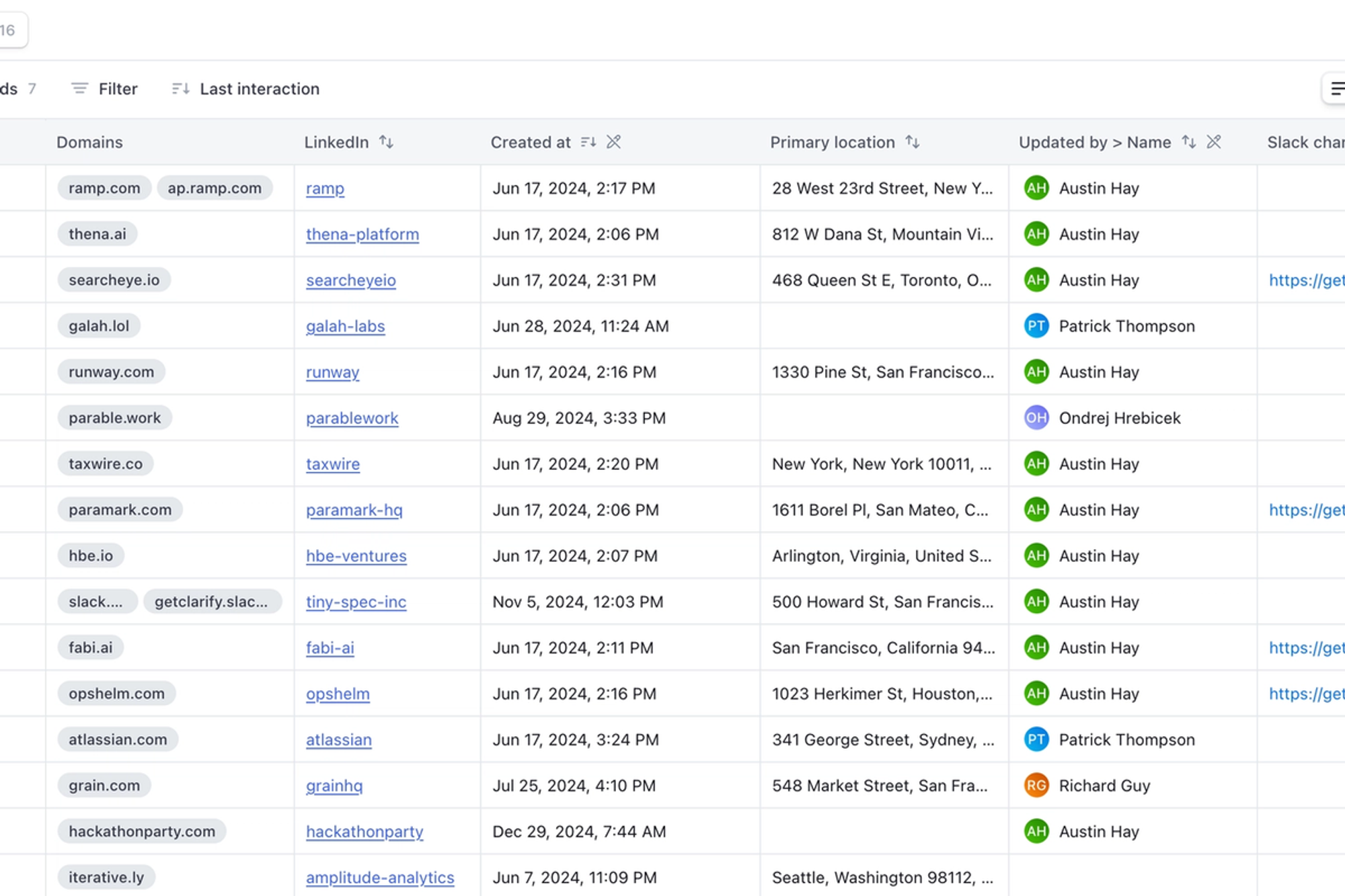
This is an example of a company object in Clarify. Each row represents a record. The columns are fields. Collectively this is a list. you can have multiple lists. Lists can also display columns that are fields from connected objects.
You can also create custom objects to track anything specific to your business - support requests, product catalogs, or backend tickets.
Fields
Fields describe the characteristics that make each record unique. You might also hear them called attributes, properties, or metadata.
For example, name, email, and last interaction are all fields on the People object. Think of these as column headers in a spreadsheet.
Unlike traditional CRMs where you manually fill in fields, Clarify:
- Automatically links related information from your email, calendar, and calls
- Enriches records with verified data from third parties
- Learns which fields matter most to you and suggests updates
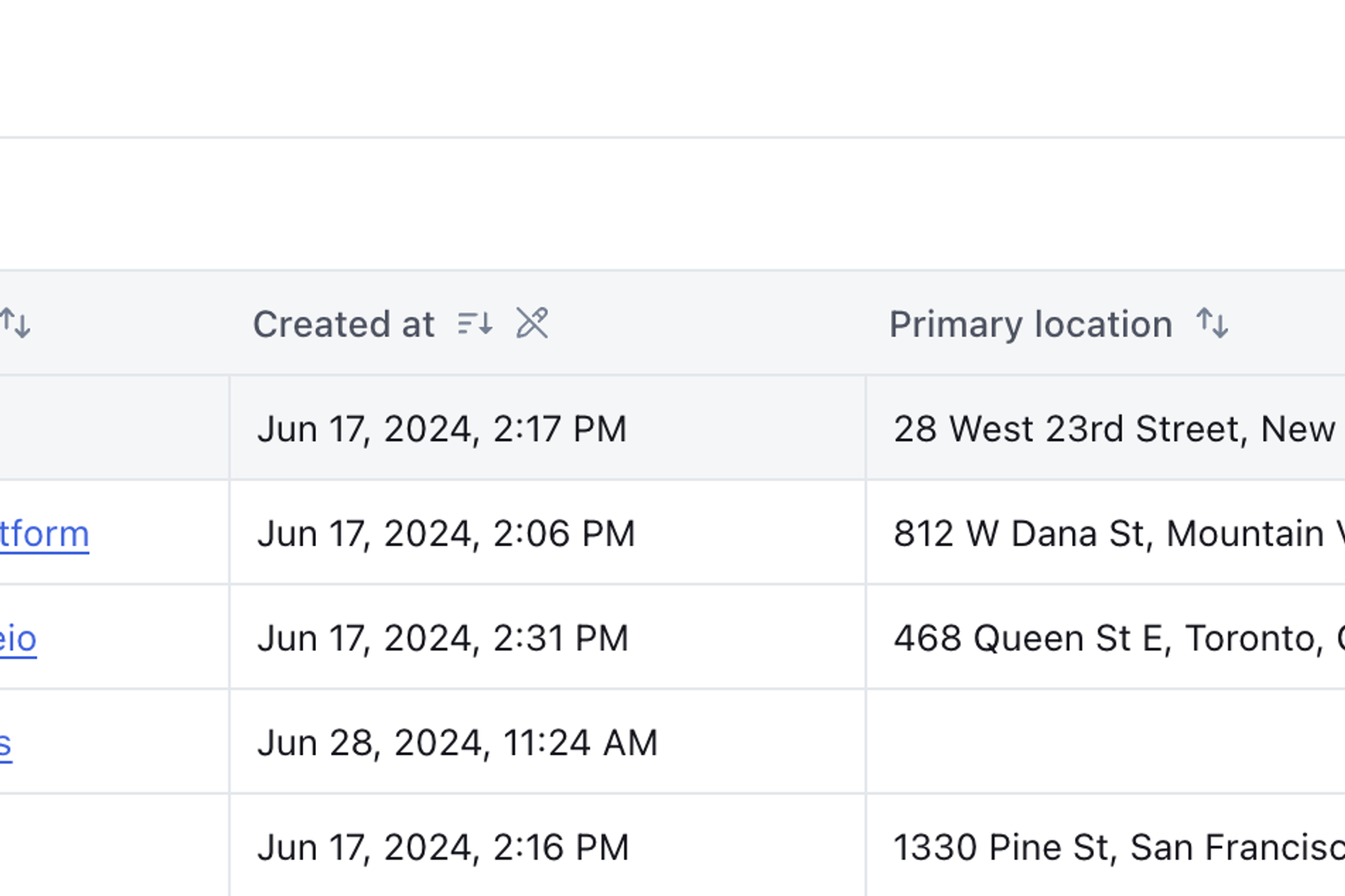
In this example, domain, LinkedIn, Created at, and Primary Location are the fields. The values in each row are the data points.
Clarify has two types of fields:
- Custom fields: Fields you can edit and control
- System fields: Fields that Clarify maintains automatically (marked with a pencil icon with a slash)
Fields can also connect across objects. For example, Updated by > name connects to the User object.
Records
A record is a complete profile of any entity in your CRM - whether it's a person, company, or deal. Each record automatically:
- Updates with the latest interaction data from your email, calendar, and calls
- Shows a timeline of activities and changes
- Displays relevant context from other connected objects
You can view records in three ways:
Detailed record page Shows a complete picture of the record with all available information.
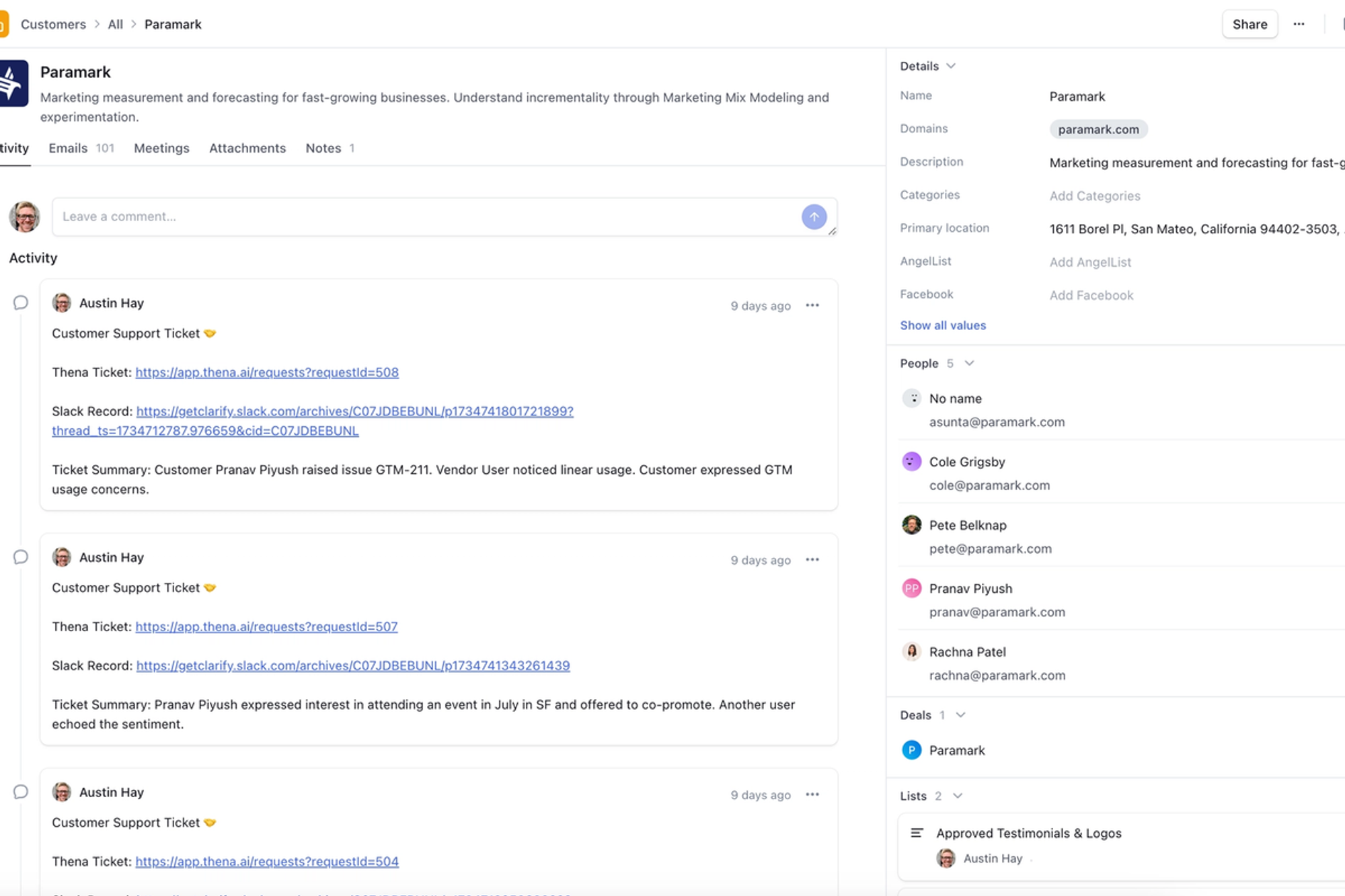
List row Shows the record as a simple row in a list view.

Kanban card Shows the record as a card in a board view (typically used for deals).
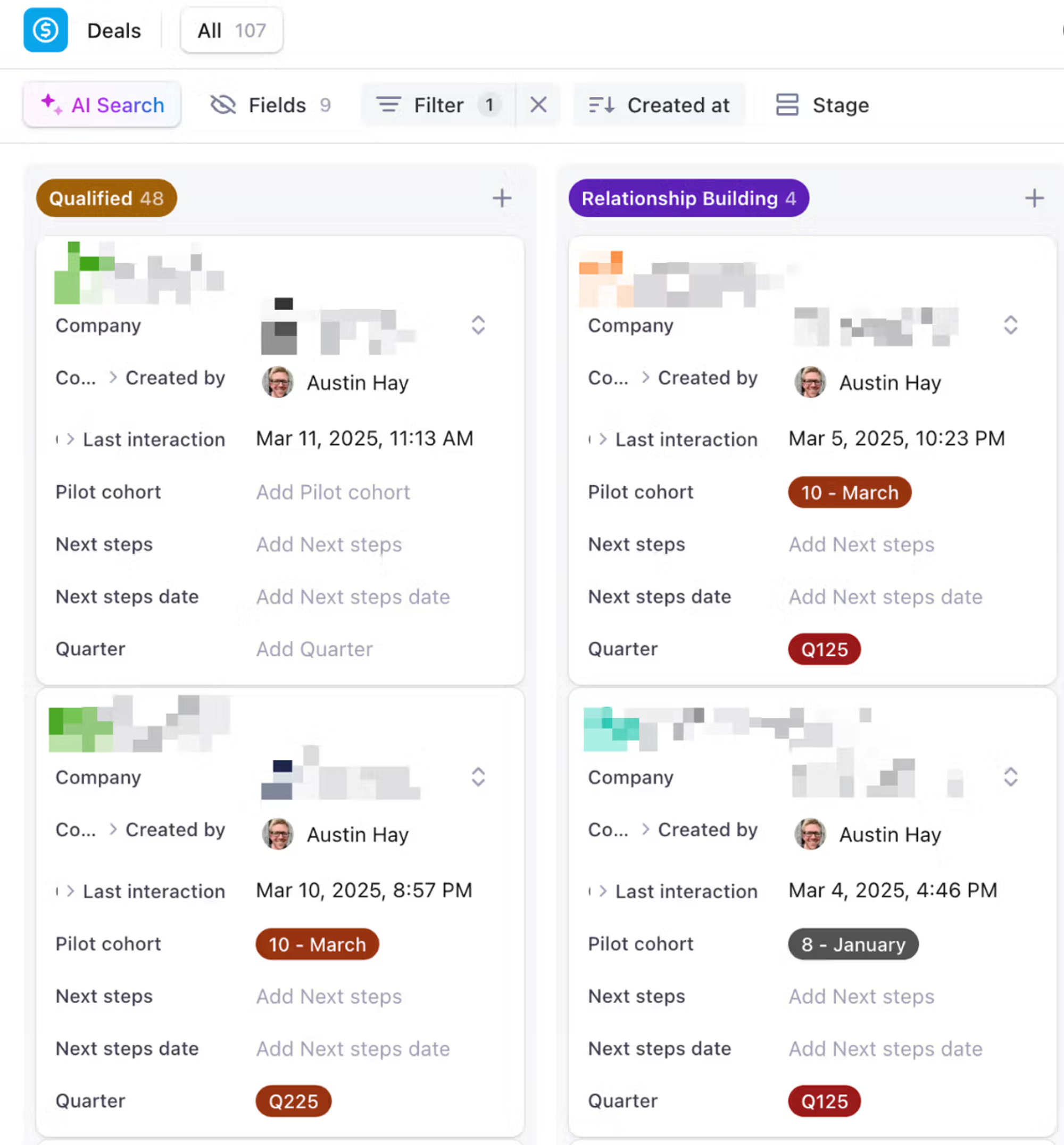
Record popups Hover over any record name throughout Clarify to see a quick popup with key information. This lets you access important details without opening the full record page.
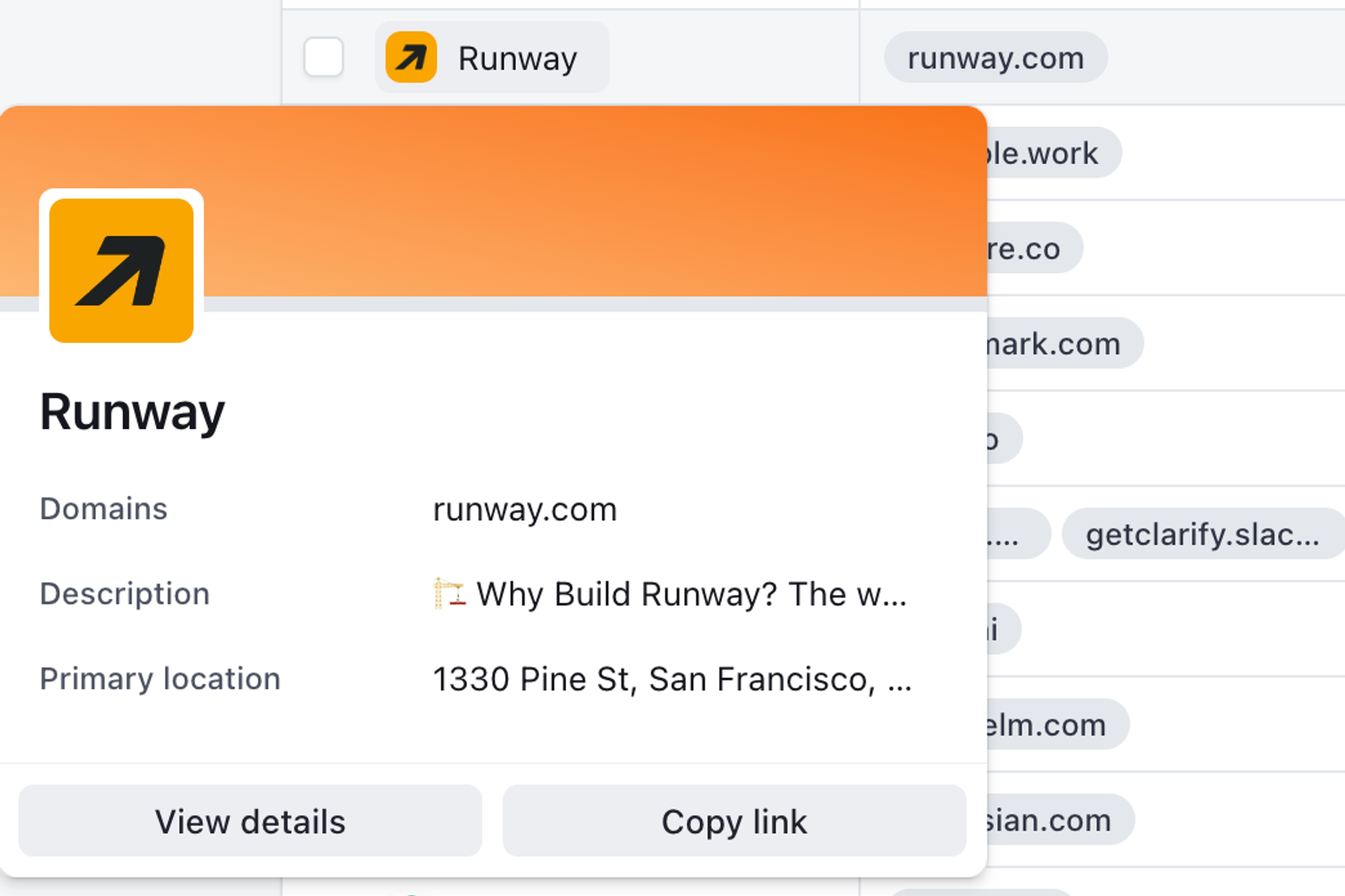
Lists
Lists are flexible ways to organize and work with your data. A list is simply a group of records - people, companies, deals, or any combination.
In Clarify, lists let you filter, sort, and organize records however you want. Teams use lists for prospecting, organizing events, planning outreach, and tracking specific groups of customers.
Pro tip: You can start with a spreadsheet, upload it to create a list in Clarify, and we'll automatically enrich your data with additional information.

This company list shows the Company object with each row representing a record and each column representing a field.
Types of lists
Lists can be either static or dynamic:
Static lists don't change unless you manually update them. You build them once using filters or AI search, and they stay the same until you modify them.
Dynamic lists automatically update based on conditions you set. They work like audiences in marketing tools - as your data changes, the list membership updates automatically. You can also sync dynamic lists to other tools in your tech stack.
Why this matters
Clarify's architecture is both intelligent and flexible. It automatically organizes your data while giving you complete control over how you view and use it. This means you'll spend less time managing your CRM and more time building relationships that drive revenue.